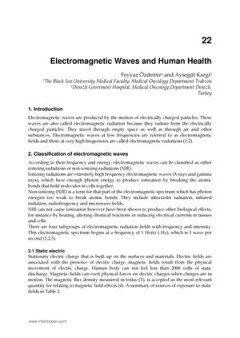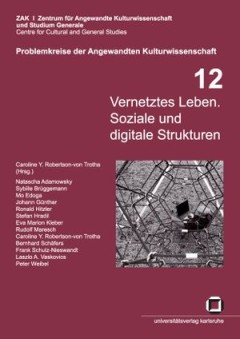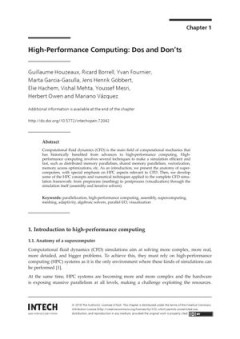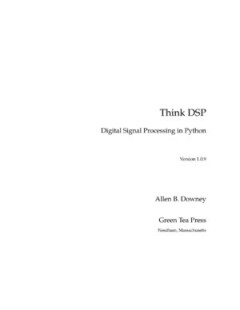Filter by

Anomaly Detection & Behavior Prediction
Anomaly Detection & Behavior Prediction: Higher-Level Fusion Based on Computational Neuroscientific Principles
- Edition
- -
- ISBN/ISSN
- 9783902613523
- Collation
- -
- Series Title
- -
- Call Number
- -

Demystifying Internet of Things Security
Break down the misconceptions of the Internet of Things by examining the different security building blocks available in Intel Architecture (IA) based IoT platforms. This open access book reviews the threat pyramid, secure boot, chain of trust, and the SW stack leading up to defense-in-depth. The IoT presents unique challenges in implementing security and Intel has both CPU and Isolated Securit…
- Edition
- -
- ISBN/ISSN
- 9781484228968
- Collation
- -
- Series Title
- -
- Call Number
- -

The Digital Humanist
This book offers a critical introduction to the core technologies underlying the Internet from a humanistic perspective. It provides a cultural critique of computing technologies, by exploring the history of computing and examining issues related to writing, representing, archiving and searching. The book raises awareness of, and calls for, the digital humanities to address the challenges posed…
- Edition
- -
- ISBN/ISSN
- 9780692580448
- Collation
- -
- Series Title
- -
- Call Number
- -

AI Knowledge Transfer from the University to Society
AI Knowledge Transfer from the University to Society: Applications in High-Impact Sectors brings together examples from the "Innovative Ecosystem with Artificial Intelligence for Andalusia 2025" project at the University of Seville, a series of sub-projects composed of research groups and different institutions or companies that explore the use of Artificial Intelligence in a variety of high-im…
- Edition
- Ed. 1
- ISBN/ISSN
- 9781000568134, 100056813X
- Collation
- -
- Series Title
- -
- Call Number
- -

Vernetztes Leben
The Internet has taken with its unlimited communication structures an outstanding role. In the process of globalization this creates not only the possibility for the integration of access to information independent from time and place, it also implies social changes with not yet known consequences. How is our society changing under these new communication structures? Is the "networked egoist" p…
- Edition
- -
- ISBN/ISSN
- 9782821881617
- Collation
- -
- Series Title
- -
- Call Number
- -

High-Performance Computing
Computational fluid dynamics (CFD) is the main field of computational mechanics that has historically benefited from advances in high-performance computing. High-performance computing involves several techniques to make a simulation efficient and fast, such as distributed memory parallelism, shared memory parallelism, vectorization, memory access optimizations, etc. As an introduction, we prese…
- Edition
- -
- ISBN/ISSN
- -
- Collation
- -
- Series Title
- -
- Call Number
- -

Think D.S.P.
Think D.S.P. is an introduction to Digital Signal Processing in Python. The premise of this book (and the other books in the Think X series) is that if you know how to program, you can use that skill to learn other things. The author is writing this book because he thinks the conventional approach to digital signal processing is backward: most books (and the classes that use them) present the m…
- Edition
- -
- ISBN/ISSN
- -
- Collation
- -
- Series Title
- -
- Call Number
- -

Think Complexity
This book is about complexity science, data structures and algorithms, intermediate programming in Python and the philosophy of science: Data structures and algorithms: A data structure is a collection that contains data elements organized in a way that supports particular operations. For example, a dictionary organizes key-value pairs in a way that provides fast mapping from keys to values, bu…
- Edition
- -
- ISBN/ISSN
- -
- Collation
- -
- Series Title
- -
- Call Number
- -

Think Bayes
Think Bayes is an introduction to Bayesian statistics using computational methods.The premise of this book, and the other books in the Think X series, is that if you know how to program, you can use that skill to learn other topics.Most books on Bayesian statistics use mathematical notation and present ideas in terms of mathematical concepts like calculus. This book uses Python code instead of …
- Edition
- -
- ISBN/ISSN
- -
- Collation
- -
- Series Title
- -
- Call Number
- -

Squeak by Example
Squeak is a modern open-source development environment for the classic Smalltalk-80 programming language. Despite being the first purely object-oriented language and environment, Smalltalk is in many ways still far ahead of its successors in promoting a vision of an environment where everything is an object, and anything can change at run-time. Squeak by Example, intended for both students and …
- Edition
- -
- ISBN/ISSN
- -
- Collation
- -
- Series Title
- -
- Call Number
- -
 Computer Science, Information & General Works
Computer Science, Information & General Works  Philosophy & Psychology
Philosophy & Psychology  Religion
Religion  Social Sciences
Social Sciences  Language
Language  Pure Science
Pure Science  Applied Sciences
Applied Sciences  Art & Recreation
Art & Recreation  Literature
Literature  History & Geography
History & Geography